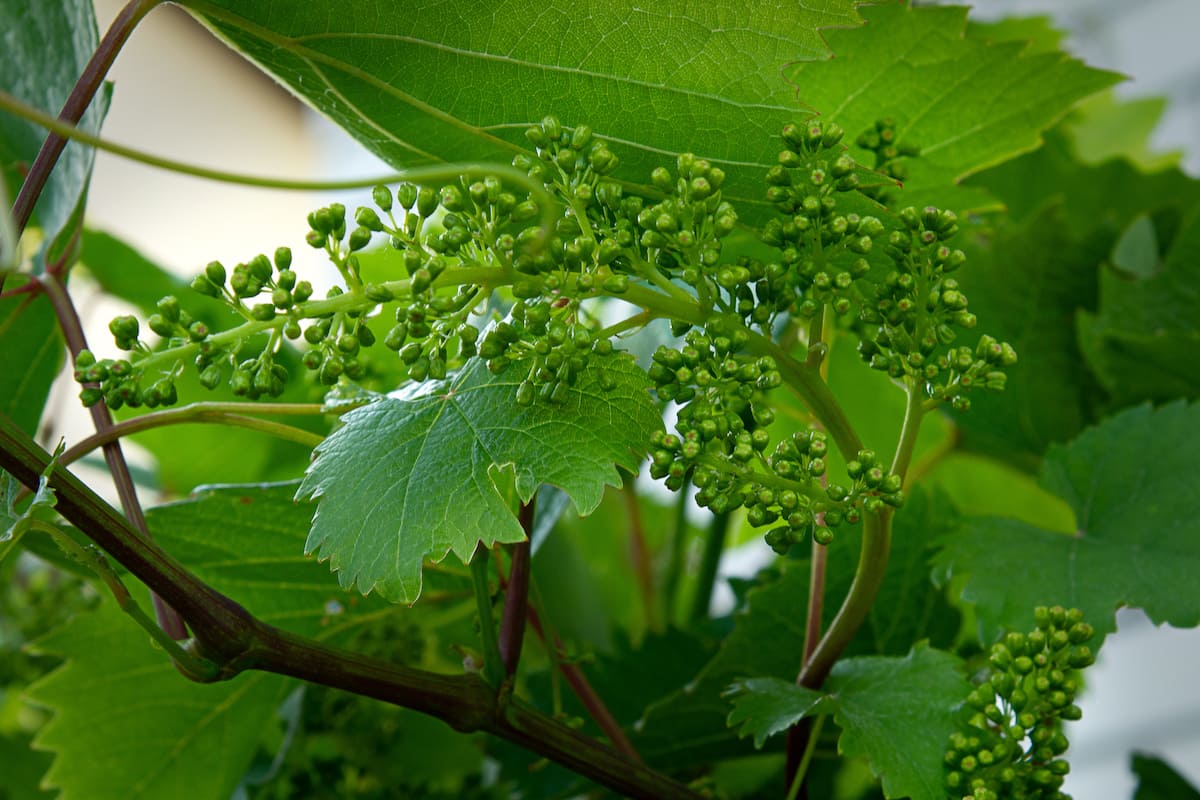
July is one of the most decisive months of the year for viticulture. In Italian vineyards – from the hills of Piedmont to the valleys of Tuscany, down to the sun-drenched slopes of Sicily – the vine enters a crucial stage in its vegetative cycle. Long, sunny days encourage intense biological activity: the landscape transforms, becoming denser, greener, and more vibrant. It’s a month that demands attention, precision, and expertise — here, the hand of the grower truly makes a difference.
In this article, we’ll walk with you among the rows to discover what happens in vineyards in July, the main agronomic challenges to face, and the techniques used to ensure healthy, balanced grapes ready to become great wine.
What Happens in the Vineyard in July?
Vigorous Vegetative Growth
July marks the peak of the vine’s vegetative phase. Shoots grow at a remarkable pace — sometimes 5 to 10 cm per day — and the plant channels its energy into developing a full, healthy canopy. Leaves multiply quickly, creating a dense internal microclimate that, when properly managed, becomes the perfect environment for the grapes to mature.
This rapid growth is fueled by photosynthesis, which works at full capacity thanks to the long exposure to sunlight. The vine becomes a bustling laboratory, producing sugars, developing clusters, and strengthening its foliage. The grower carefully observes the balance between vegetative growth and fruit development, ready to step in to maintain harmony within the vineyard.
The Start of Veraison
Between late July and early August — depending on the region and grape variety — veraison begins: the moment when the grape berries start to change color. This seemingly slow and silent process actually signals a dramatic shift: the vine has finished growing and is now entering the maturation stage.
During veraison, berries stop increasing in size and begin accumulating sugars, aromas, and pigments. Red grapes start to show shades of violet and blue, while white varieties take on golden hues. At the same time, acidity levels begin to decline. This is a key moment for the future aromatic and structural profile of the wine. Carefully monitoring this stage helps plan targeted actions in preparation for harvest.
Caring for the Vineyard in July: Essential Agronomic Practices
Green Pruning
Green pruning is one of the most important tasks, for some, in July. It involves removing excess shoots, secondary growth (called “femminelle”), and non-productive shoots. This allows the plant to concentrate its resources on the grape clusters, avoiding unnecessary energy expenditure.
Another critical goal of green pruning is to improve sunlight exposure and airflow inside the canopy, which promotes even ripening and prevents the development of fungal diseases. The balance between leaves and fruit is essential: an overly vegetative vine will produce diluted, less expressive fruit, while a well-managed vine will yield healthy, flavorful grapes rich in desirable compounds.
Targeted Leaf Removal
Leaf removal is the selective stripping of leaves around the grape zone. If done correctly, it improves ventilation and lowers humidity levels — two important factors in preventing diseases like downy mildew, powdery mildew, and botrytis.
This practice must be carefully managed, especially in hotter regions, to avoid exposing the clusters to intense sunlight during peak hours. In many vineyards, growers remove leaves only on the east side of the row, where the gentler morning sun shines, leaving foliage on the west side for protection. It’s a precision technique requiring experience and sensitivity to each vineyard’s unique conditions.
Weather Watch: Heatwaves, Hail and Water Stress
Heatwaves and Protecting the Vine
Temperatures above 35°C (95°F), often accompanied by dry winds, can cause heat stress. The vine reacts by slowing down its metabolic activity, and clusters can become sunburned or start dehydrating.
To protect the grapes, many growers maintain a partial leaf wall on the sunniest side of the canopy, or apply kaolin clay treatments, which reflect sunlight and reduce the surface temperature of the berries.
Hail: The Sudden Threat
Summer hailstorms are rare but destructive. In just a few minutes, hailstones can cause major damage to months of hard work. Leaves, shoots, and grape clusters can be bruised or torn, making them more vulnerable to infection and rot.
To mitigate this risk, some vineyards use anti-hail nets, increasingly common in new plantings, or take out special crop insurance. After a hail event, it’s crucial to act quickly with healing and copper-based treatments to prevent disease from taking hold.
Approaching Harvest: Monitoring Starts in July
Even though harvest may still seem far away, July is when the first assessments begin. Visual and analytical checks are performed on grape clusters: evaluating shape, color, and compactness, while measuring sugar levels (Brix), acidity, and pH to get an early sense of ripeness.
This constant monitoring work helps not only in harvest preparation but also in planning late-season interventions or deciding on staggered harvests based on ripening zones. In early-ripening varieties or warmer regions, some grapes may be picked as early as late August.
Wine Tourism in July: An Experience of Scents and Landscapes
For wine lovers and nature enthusiasts, July is an ideal month to visit a vineyard. The rows are lush and vibrant, and the vineyard is alive with energy. Farm work is in full swing, and many wineries offer guided tours, tastings in the vineyard, and hands-on experiences with the vines.
Walking through the rows, listening to growers’ stories, and enjoying a glass of wine at sunset amid the scents of the countryside are magical moments that combine emotion, culture, and flavor. It’s also a way to understand just how much dedication goes into every bottle.
Conclusion
July in the vineyard is a month of fine balance and crucial decisions. It’s when the grower works with great care to protect and guide the vine as it prepares to ripen. Every action — from green pruning to leaf removal, from water management to weather protection — has a direct impact on the quality of the vintage.
For those who work among the vines, July allows no distractions: it’s a month that builds the wine’s future. And for those who love the world of wine, it’s the perfect moment to draw close to the land, breathe in the vineyard, and realize just how precious each sun-kissed cluster truly is.






Leave a Reply